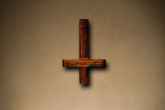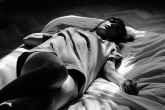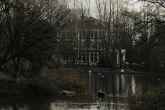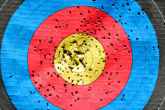Hereward Carrington's Forgotten Ghost Hunting Tools
July 14, 2023 1:00 AM ‐ Ghost Hunting • Paranormal
This article is more than one year old.
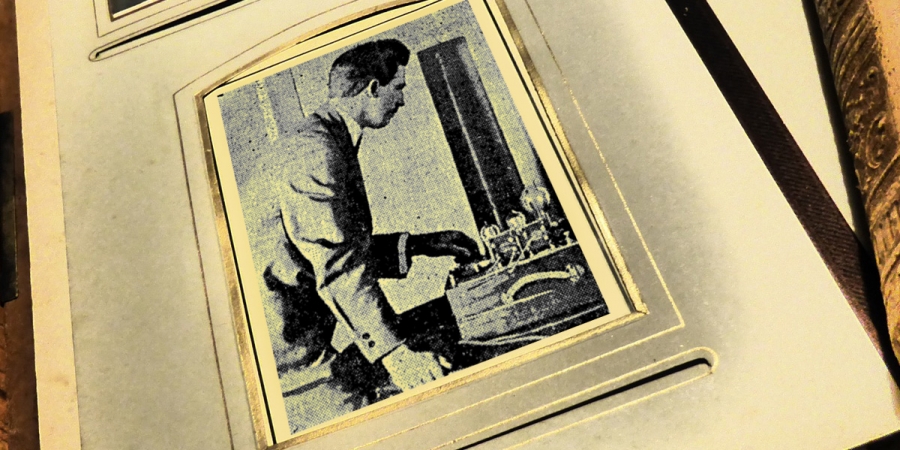
Photo: commons.wikimedia.org
Normally when I write about ghost hunting devices, I almost always use a phrase like "it's believed that spirits can interact with it" when explaining how it works. This is because the inner workings of most devices and apps have never been explained by their creators.
Take the Ovilus, for example, a handheld device that generates words supposedly representing the voices of spirits. It's never been made clear exactly how a spirit can interact with the device in such a way as to indicate the word from the device's in-built database of words that it is trying to communicate.
Similarly, many ghost hunters use spirit boxes, which rapidly scan through radio frequencies. It's believed that spirits can manipulate the fleeting bursts of radio noise to communicate. Again, the mechanics behind the belief that spirits can manipulate radio waves have never been explained.
However, one paranormal researcher named Hereward Carrington once created a device with a very clear and easy-to-understand method of operation. Despite its scientific rigour, it's rare that modern-day researchers recreate it or even adopt a similar approach.
Hereward was a British-born American investigator who emigrated to the United States in 1888. He was well known for his rigorous methodologies and scientific approach, applying a critical but open-minded perspective to the study of the paranormal. One of his most famous experiments in which he applied scientific rigour to the investigation of the paranormal was his use of the manometer.
A manometer is a device typically used in physics and engineering to measure pressure differences, usually of a gas or a liquid. However, Hereward adapted this instrument for his unique purposes in investigating what he termed "manforce," his term for a supposed manifesting spirit.
What's great about the manometer is that its workings aren't a mystery. Yet, in his 1919 book 'Modern Psychical Phenomena', Hereward reported having repeatable results. What's even more impressive is the lengths that Hereward and his colleagues went to ensure they weren't victims of false positives.
The experiment was carried out in a specially constructed room with a concrete floor to minimise interference from naturally occurring vibrations. The room was tightly sealed, leaving only one door that connected it with the outside passage, where the experimenters monitored the results.
Within this room, Hereward placed a hermetically sealed cardboard cylinder, partially covered with tin foil, that was roughly two-fifths the size of a human body. He inserted a rubber tube into this cylinder, connecting the inside of the cylinder to a manometer, which under normal conditions has a spirit-level-like bubble sat in the centre of the instrument.
The purpose of the cylinder and the manometer was to measure any displacement of the air within the cylinder, which Hereward proposed would occur if a spirit entered the cylinder. If such an entity entered, it would displace some of the air in the cylinder, causing the manometer to move along its scale registering the presence of the entity.
By requesting the spirit to enter and exit the cylinder, he noted that the indicator in the manometer would move back and forth on the scale, seemingly in response to the requests. Hereward interpreted this as evidence that a solid or semi-solid entity had indeed entered and displaced the air in the cylinder.
Hereward had a long career in the paranormal field and wrote over 100 books on various subjects, many dealing with psychic phenomena. Some of his notable titles include 'The Story Of Psychic Science' (1930), 'The Psychic World' (1937), and 'Psychic Oddities' (1952). It's not surprising that with so much time spent researching the unknown, the manometer wasn't his only ghost-detecting invention.
Hereward also devised a tool called the ululometer, also known as the "psychic howler," designed to detect any energy, whether living or disembodied, that came within two metres of it. In simple terms, the ululometer was a highly sensitive coil made up of thousands of finely tuned copper wires. These wires were connected to a receiving apparatus in another room, where an observer would listen through telephone receivers.
When a presence approached the ululometer, it would cause a variation in the electric current passing through the coil, thereby revealing the presence of any energy, human or ghostly, in its vicinity. Not too dissimilar to the modern-day REM-Pod, if the presence approached close to the coil, a loud, high-pitched howling noise would be heard in the receivers, with the pitch of the noise increasing as the body came closer.
The main idea was to detect any form of energy a spirit might possess, much like how it could detect the energy radiated by a living person's body. Again, the principles behind how the ululometer works are sound. The fact that it is said to be able to detect a living person, as well as a dead one, makes it sound much more credible than many modern devices.
Hereward was known for his efforts to study the paranormal using scientific methods, but more than a century on, this approach has been almost completely lost, leaving the broader scientific community to view studies of the paranormal with skepticism due to the lack of consistent, repeatable evidence and often unverifiable claims.
Paranormal teams are forever talking about doing something different and being more scientific. Well, here's your opportunity to do just that and complete the work of Hereward Carrington.
Related Content
Daily Horoscopes
You May Also Like







